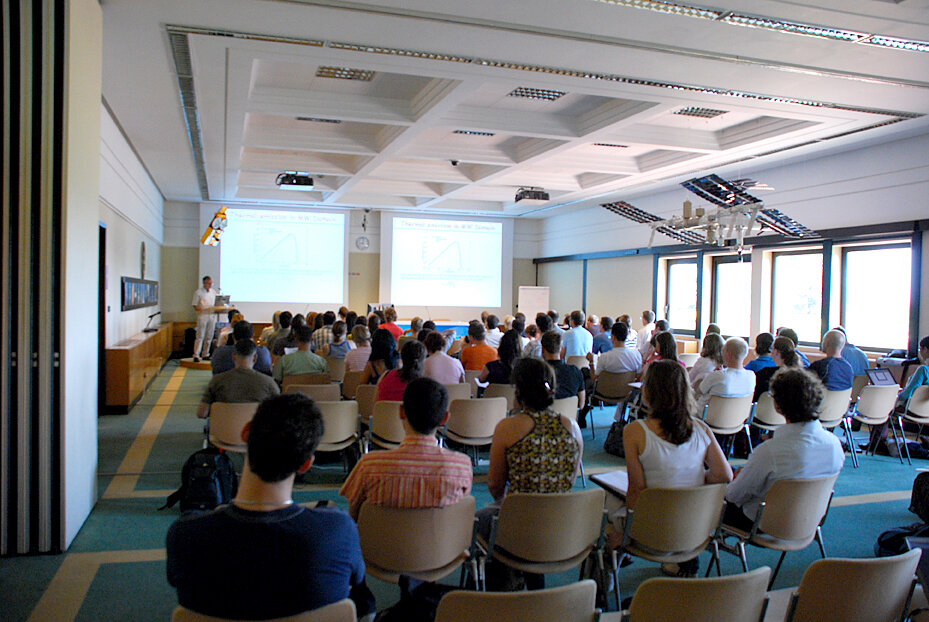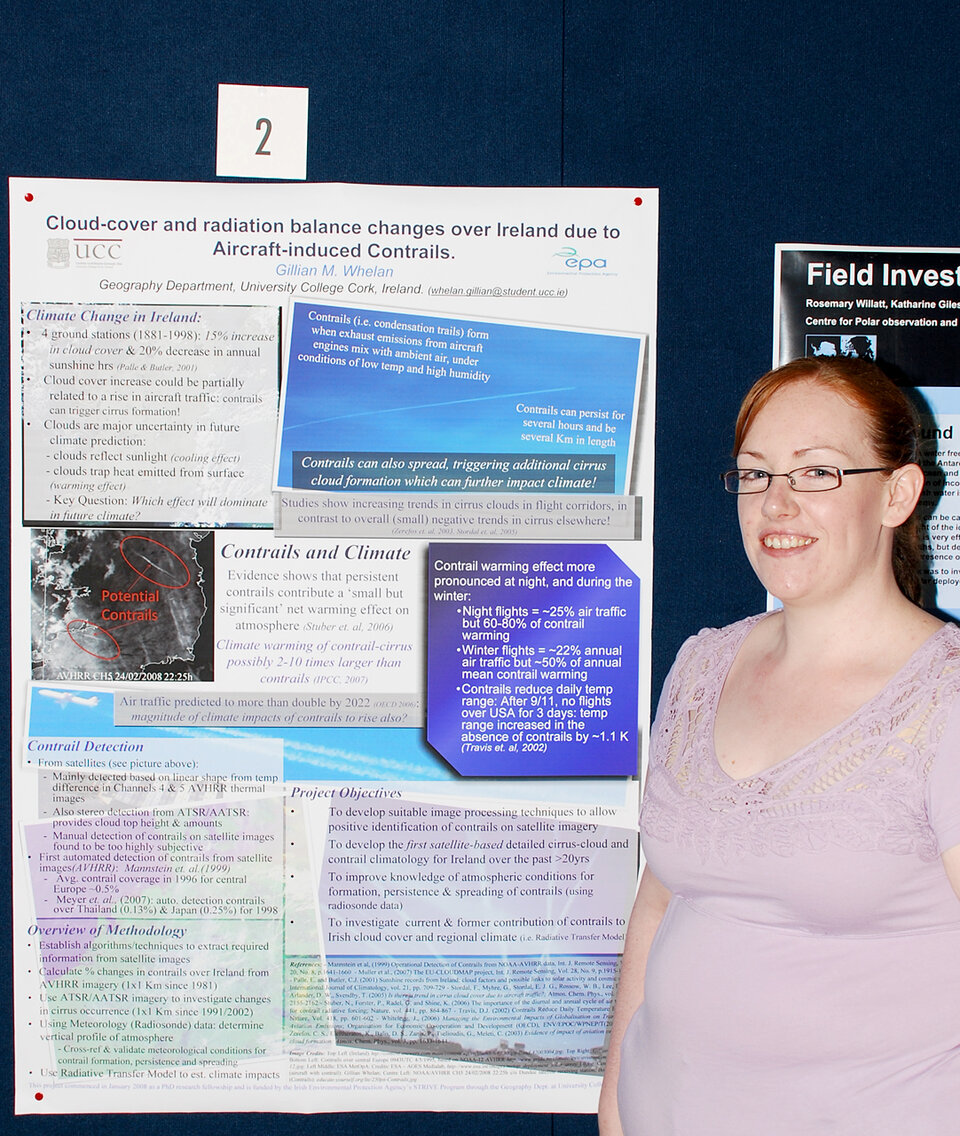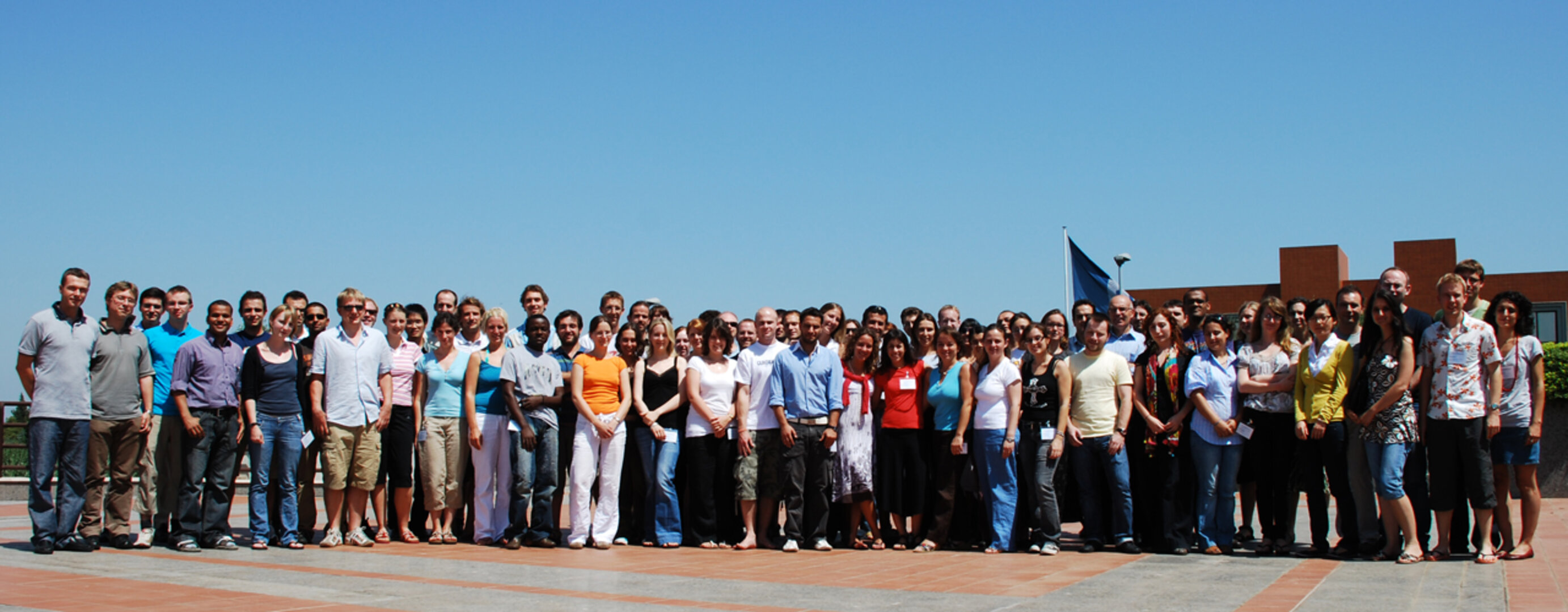Earth Observation Summer School highlights earth system monitoring and modelling
ESA’s Summer School on earth observation at ESRIN Frascati, now on its 4th edition, brought together 71 young scientists from 26 nationalities interested in Earth science and space technology. The participants were selected from more than 250 applicants across Europe and the world, for a course on “Monitoring and Modelling of the Earth System”.
The two-week course, from 4 to 14 August 2008, focused on the assimilation of Earth Observation data into Earth System computer models. It aimed at providing students with an integrated end-to-end perspective ranging from measurement techniques to end-user applications.

It included more than 30 lectures given by leading scientists in their field and covering issues related to Remote Sensing, Earth System Modelling and Data Assimilation as well as hands-on computing exercises on processing of Earth Observation data from ESA and other Earth Observation Missions.
Keynote lectures on global change issues presented the current state of science of global change and its relationship to society in order to help students appreciate how their specific field fits into a broader scientific and political context. The students also presented their work during a poster session in the afternoon.

“I found all the subjects presented very interesting and well presented from the scientists who are working daily on these specific topics. I was particularly interested in the lectures on the remote sensing of sea ice, the basic concepts about surface Albedo estimates and climate change.” said Simone Placidi, Italian post doctoral student at the International Research Centre for Transmission-Telecommunication and Radar at the Technical University of Delft, The Netherlands.
Simone is not new to ESA, as he spent one year at ESA’s establishment ESTEC in the Netherlands as a Young Graduate Trainee, where he worked on ESA’s Earth Explorer mission for studying clouds, aerosols and radiation interactions: EarthCare.

Gillian Whelan, PhD student at University of College Cork, Ireland, is investigating the climate impact of aircraft-induced contrails and contrail-cirrus in Ireland by using satellite data, as it is one of the only means of obtaining spatially-uniform information on cloud-cover.
“There is strong evidence to suggest that contrails contribute to a small but significant warming effect on the climate and studies, which have investigated the amount of cirrus cloud cover, have found that these clouds are increasing in major flight corridors. As contrails have a much larger climate impact at night and in winter, a rescheduling of flights could reduce their impacts on atmospheric warming.
During the course at ESRIN I received some very valuable advice for my research. In fact, some of the techniques that I hope to apply in my project were developed as part of ESA’s Contrails project.” said Whelan.

“The recent earthquake in Chengdu, China, demonstrates that seismic hazard is still number one of nature's threats. The project I am working on” said Gertjan van Zwieten from the Delft University of Technology, The Netherlands, “will give a better insight in the mechanism of past earthquakes and their influence on nearby tectonic structures.
It will not prevent the earthquake but mitigating any future damage. Risk assessment of earthquakes is an important example to local governments because it will provide the information they need to take preventive decisions, to prepare emergency plans or apply strict building regulations.”

“Our Jellyfish Detection and Forecast project in the North-western Mediterranean, which makes use of Earth observation satellite data could have a strong socio-economic impact not only for tourism, fisheries management, or for environmental agencies but it can also provide new scientific knowledge on jellyfish population dynamics and on the use of computational intelligence techniques in environmental modelling.
I feel that at the moment the scientific data in jellyfish aggregation is restricted to certain areas; however, since jellyfish blooms are an increasing problem for coastal activities in Europe, a collaboration and information exchange with other research institutions along the Mediterranean basin seems a good idea to improve the situation.” concluded Laia Romero, PhD student at Spanish research company Starlab in Barcelona, Spain.
Lucie Roland’s research focuses on Seismic source characterisation by ionospheric sounding. She said: “I learned data assimilation techniques that will be used to monitor the ionosphere. Data assimilation was the most interesting topic for my PHD thesis. I also learned how to interpret images acquired by different satellites by image processing.
We have today few measurements of ocean areas for earthquake detection. ESA’s Earth observation programme has a very important role in Europe in this area. We have a project with ESA in ionospheric study; we would also like to cooperate with ESA on an early warning system project with remote sensing applications.” concluded Lucie Roland, PhD student at Institut du Physique du Globe, Paris, France.
The lectures in the morning were complemented by hands-on practicals on computers in the afternoon where students had the opportunity to learn how to process and analyse remote sensing data, and better understand how to integrate data into simple models.

During the ceremony of the delivery of the “Diplomas” to each participant, Pierre-Philippe Mathieu from the ESA Earth Observation Science and Applications department, organisor of the 4th Summer School, thanked lecturers, students and his team and expressed his hope that “the school provided them with a good exposure to the main research challenges in understanding the Earth System and the necessary tools to make the most of Earth observation, as well as the opportunity to network with fellow scientists across various Earth Science disciplines”.
Applications for the next and 5th edition of the Summer School will be available on the ESA summer school website during January-March 2010.
For further information, please contact:
Pierre-Philippe Mathieu Tel:+ 39 06 941 80 568
E-mail: Pierre.Philippe.Mathieu@esa.int




